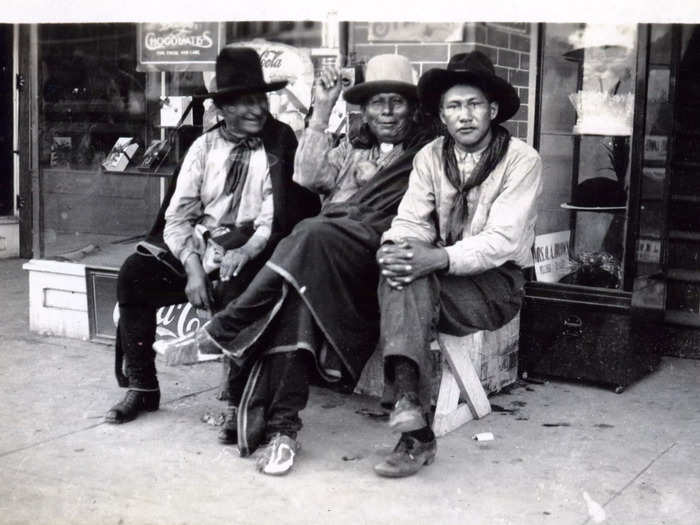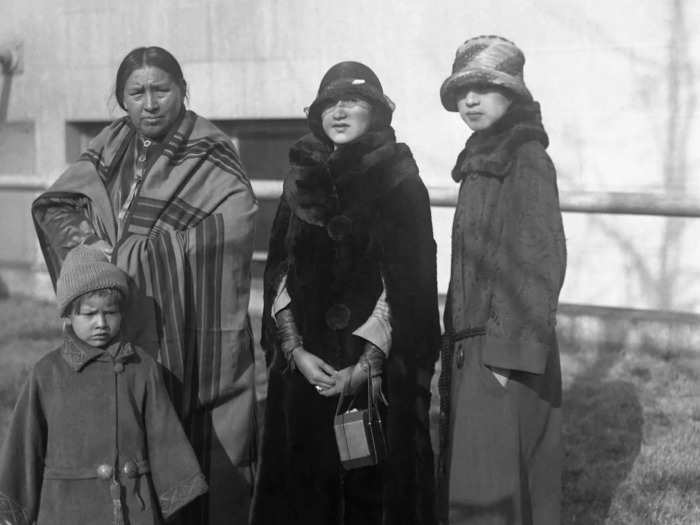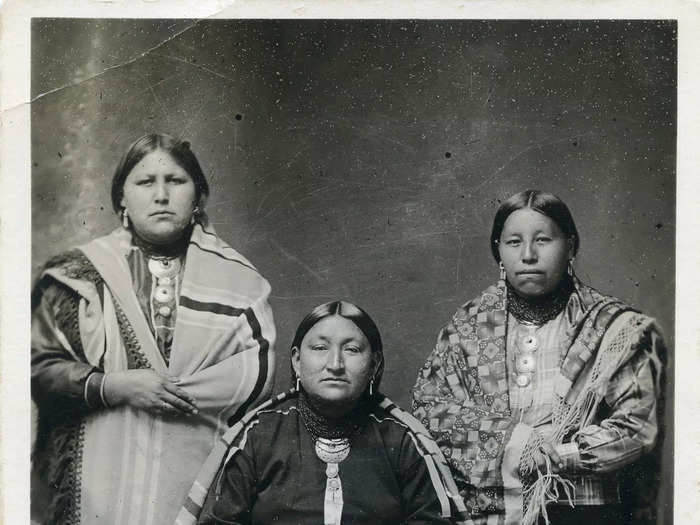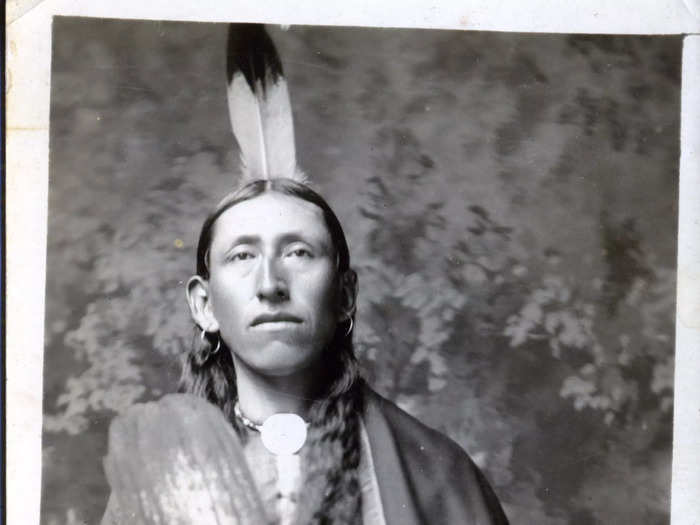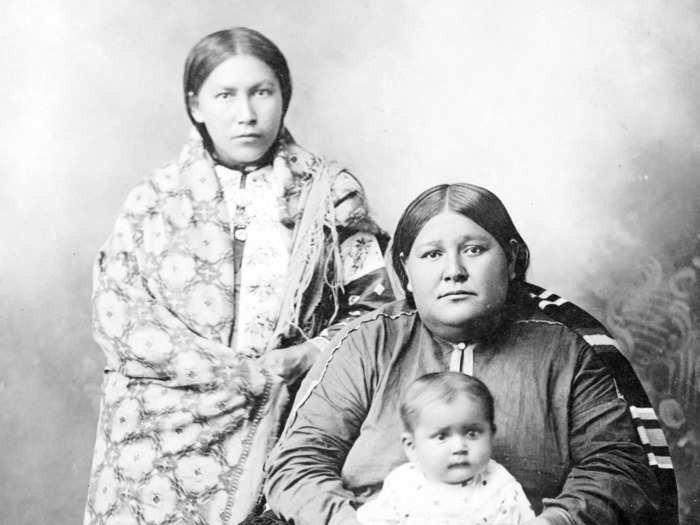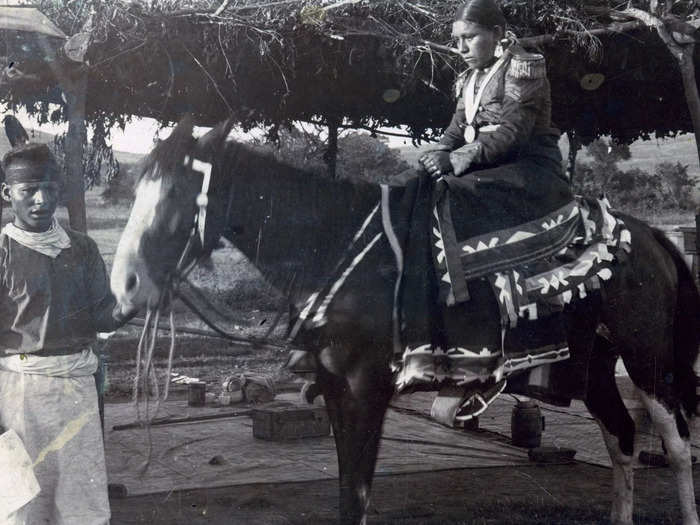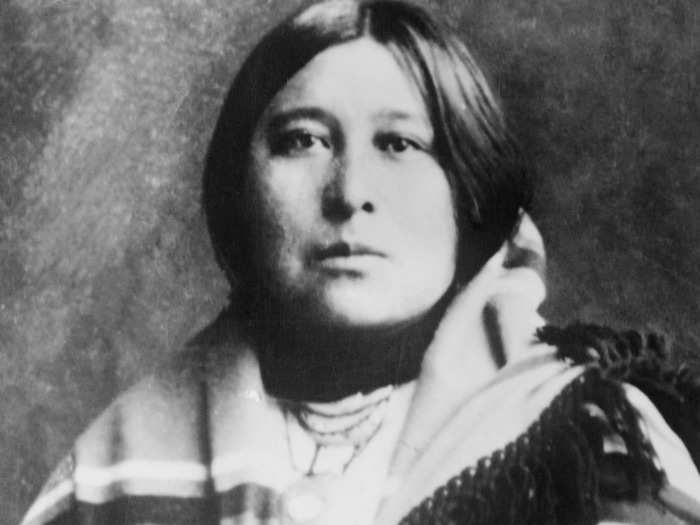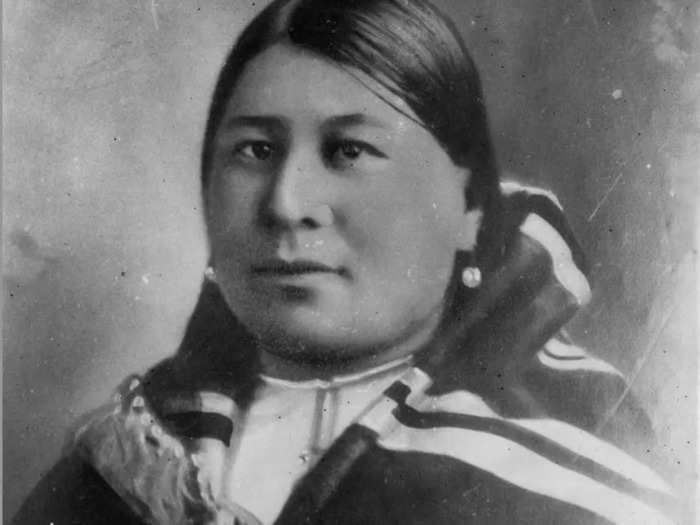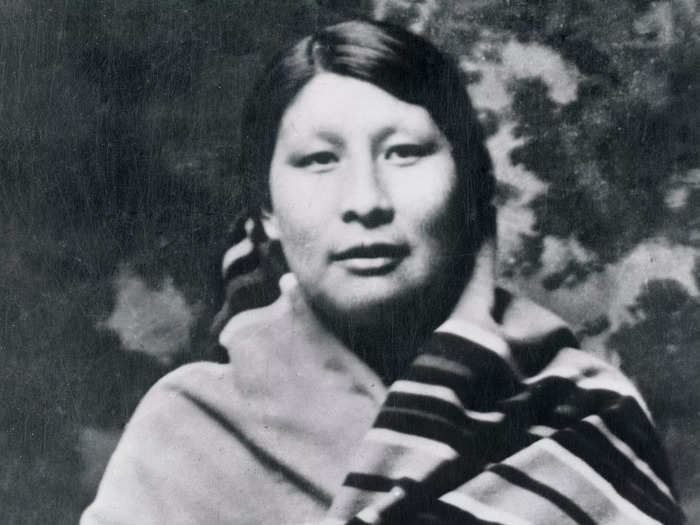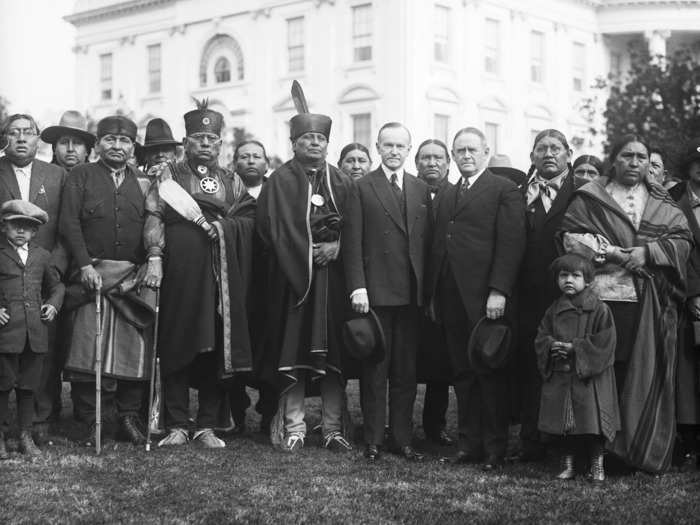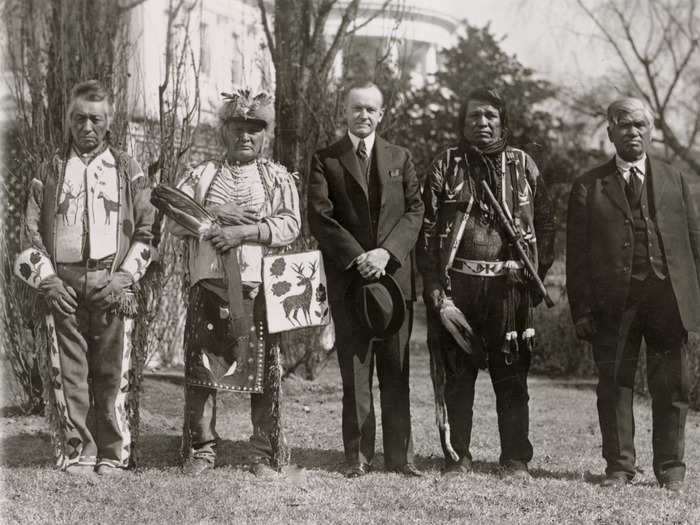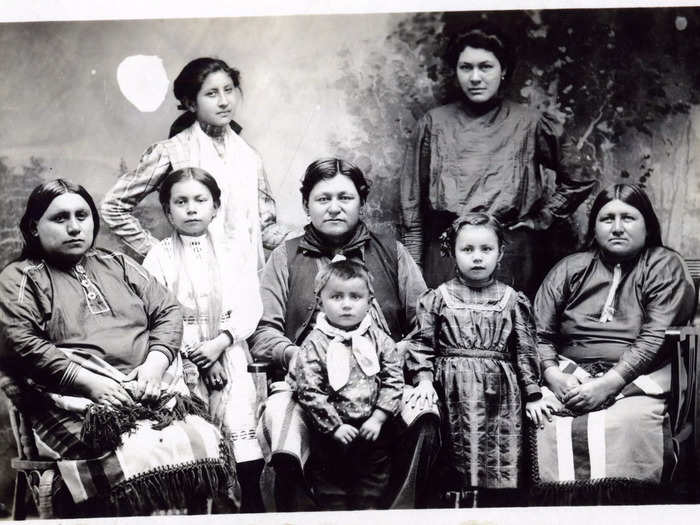Three women from the Osage Nation, living in Pawhuska, Oklahoma.HT Love/Oklahoma Historical Society/Getty Images
- Martin Scorsese's film "Killers of the Flower Moon" is about a string of murders in 1920s Oklahoma.
- At the center of the conspiracy was the Osage Nation, a Native American tribe living in the state.
The Osage Nation is a Midwestern Native American tribe that originally developed in the Ohio and Mississippi valleys around 700 BC.
After getting forcibly displaced from their original territory in Kansas by the US government, the Osage people found a new home in Oklahoma during the 1800s.
In 1894, the Osage discovered the land they'd been given was oil-rich. It was so oil-rich, in fact, that the Osage became the richest people per capita in the world.
"In 1923 alone, the tribe took in more than $30 million, the equivalent today of more than $400 million," David Grann wrote in his 2017 book, "Killers of the Flower Moon."
The movie of the same name, starring Robert De Niro and Leonardo DiCaprio, follows the grisly history of what came next: a wide-ranging conspiracy of white Oklahomans who murdered dozens (if not more) Osage tribe members to gain control of their land.
Here's what the real members of the Osage Nation looked like before and during what became known as the "Reign of Terror."
Circa 1860: There are photos of Osage Nation members from before the Civil War like this one of Wincombone, which translates to Far-Sighted.
An Osage woman named Wincombone poses beside a fringed footstool. J. Lee Knight/Graphic House/Archive Photos/Getty Images
Circa 1918: But most photos show the tribe members decades later. This photo shows three members of the Osage Nation sitting in front of a shop in Pawhuska, the city where the Osage tribal government still operates today.
Three unidentified men of the Osage Nation sit on a bench in front of a shop in Pawhuska, Oklahoma. Oklahoma Historical Society/Getty Images
Circa 1920s: Some Osage women chose to dress in a more modern fashion, like Rose Wagoshe (center) and Mary Red Eagle (right). Some, like Mrs. Red Eagle (left) chose traditional clothing.
Left to right in the group are Mrs. Red Eagle, Miss Rose Wagoshe, and Miss Mary Red Eagle. VCG Wilson/Bettmann Archive/Getty Images
Circa 1918: Three Osage women sit for a portrait in traditional Osage attire.
Three unidentified women from the Osage Nation. HT Love/Oklahoma Historical Society/Getty Images
Circa 1918: An Osage Nation member gets his photograph taken in Pawhuska. The portrait studio plays a part in "Killers of the Flower Moon."
A postcard features a photograph of an unidentified man of the Osage Nation, in Pawhuska, Oklahoma. HT Love/Oklahoma Historical Society/Getty Images
Circa 1918: A woman and her two children are photographed in Pawhuska. New York City residents can see an Osage blanket like this one in the Metropolitan Museum of Art.
A postcard features a photograph of an unidentified women and two children of the Osage Nation in Pawhuska, Oklahoma. Oklahoma Historical Society/Getty Images
1920: This photo depicts an Osage wedding. Weddings once involved a four-day negotiation between the two families.
Portrait of Paul Albert and his wife, both of the Osage Nation, at their wedding in Pawhuska, Oklahoma. George W Parsons/Oklahoma Historical Society/Getty Images
1926: This is Mollie Burkhart, played by Lily Gladstone in "Killers of the Flower Moon." Her entire family was murdered — or died under suspicious circumstances — for their oil headrights.
Mollie Burkhart. Bettman/Getty Images
1915: Mollie's sister Anna Kyle Brown was killed in 1921. She is played by Cara Jade Myers in the film.
Portrait of Anna Kyle Brown, Mollie's sister. Vince Dillion/Oklahoma Historical Society/Getty Images
Their sister Rita was killed in an explosion, along with her husband, Bill, in 1923. Rita is played by JaNae Collins in "Killers of the Flower Moon."
Rita Smith. Bettman/Getty Images
1924: A group of Osage traveled to Washington, DC, to meet with President Calvin Coolidge.
The Osage traveled to Washington, DC, to meet with President Calvin Coolidge. Bettmann/Getty Images
1925: The Osage returned to the White House to meet with Coolidge again. In the film, Mollie also takes this journey to plead with the federal government to help solve the murders in her community.
President Calvin Coolidge standing with four Osage men with the White House in the background. National Photo/Buyenlarge/Getty Images
Circa 1922: An Osage family sits for a portrait in Pawhuska. While some of the murders during the Reign of Terror were solved, many were not, and today, 26% of headrights in the area are owned by non-Osage people or institutions, which the tribe is trying to change.
Postcard features a photograph of a group of unidentified women and children of the Osage Nation in Pawhuska, Oklahoma. William J Boag/Oklahoma Historical Society/Getty Images


